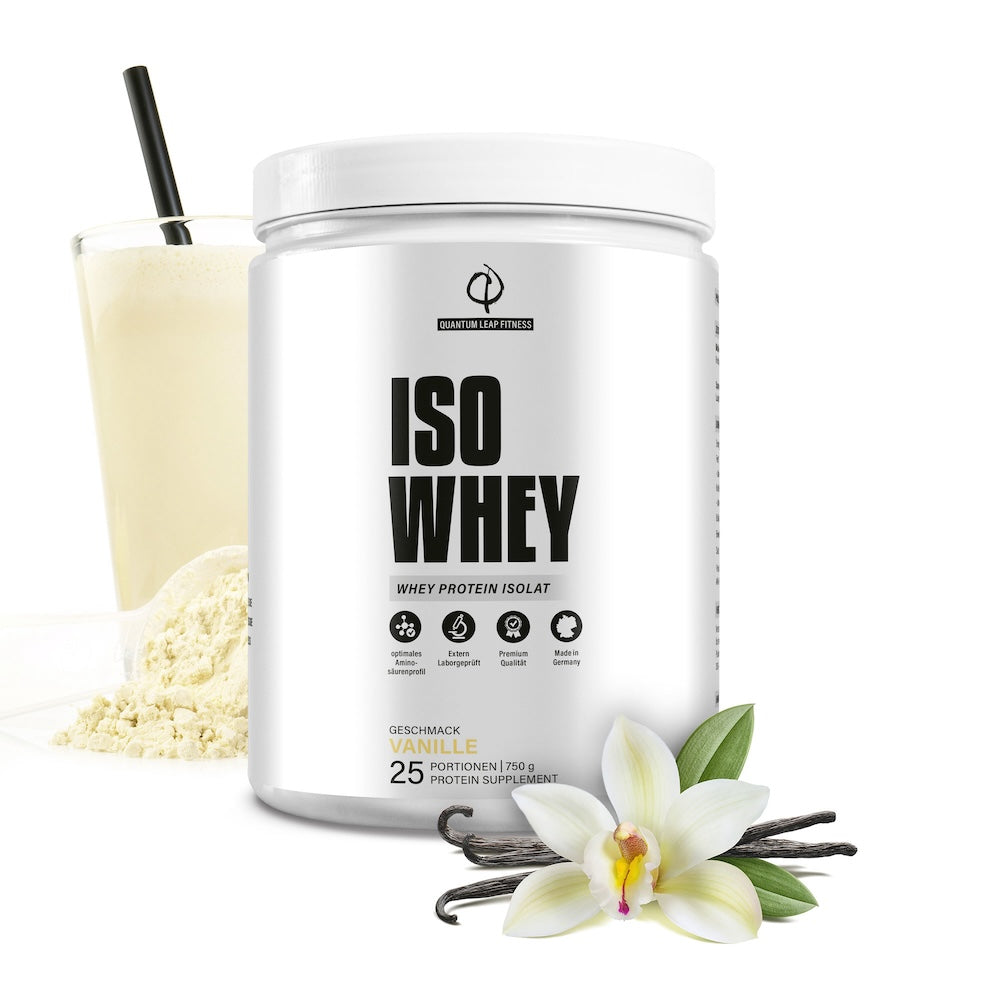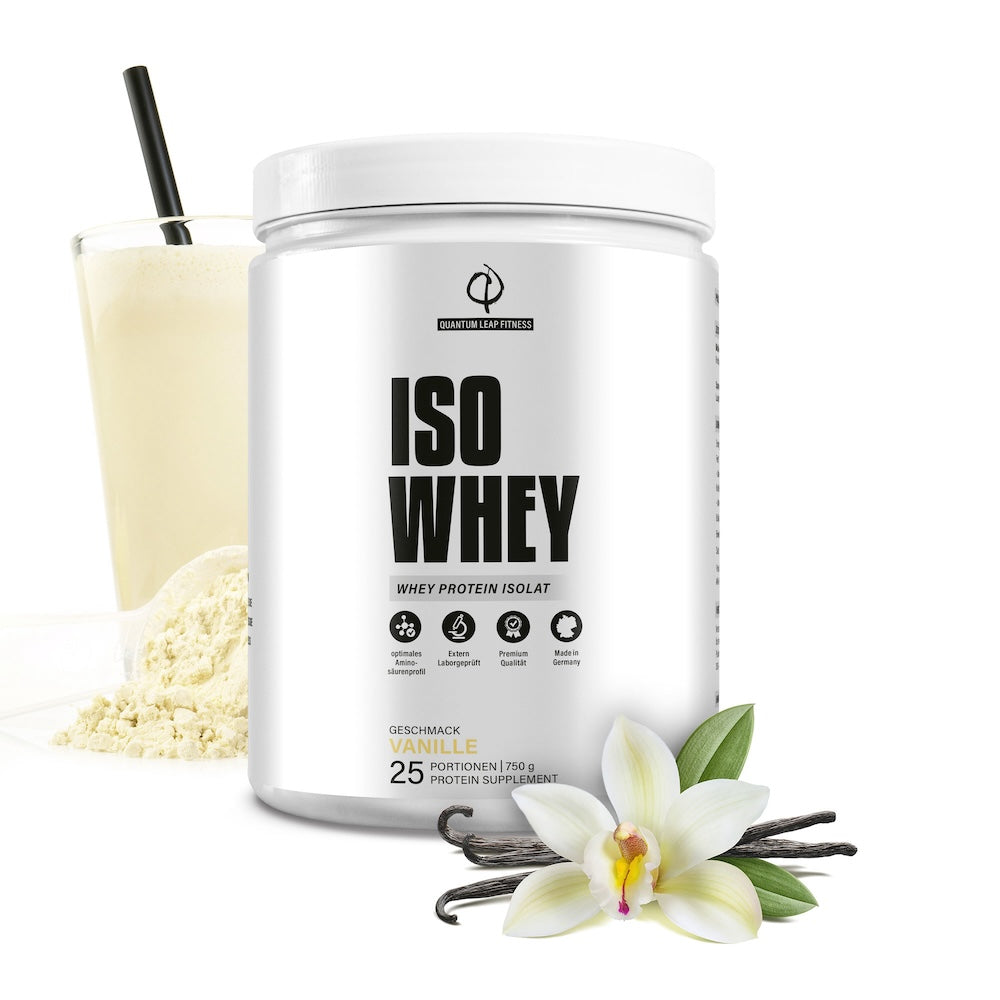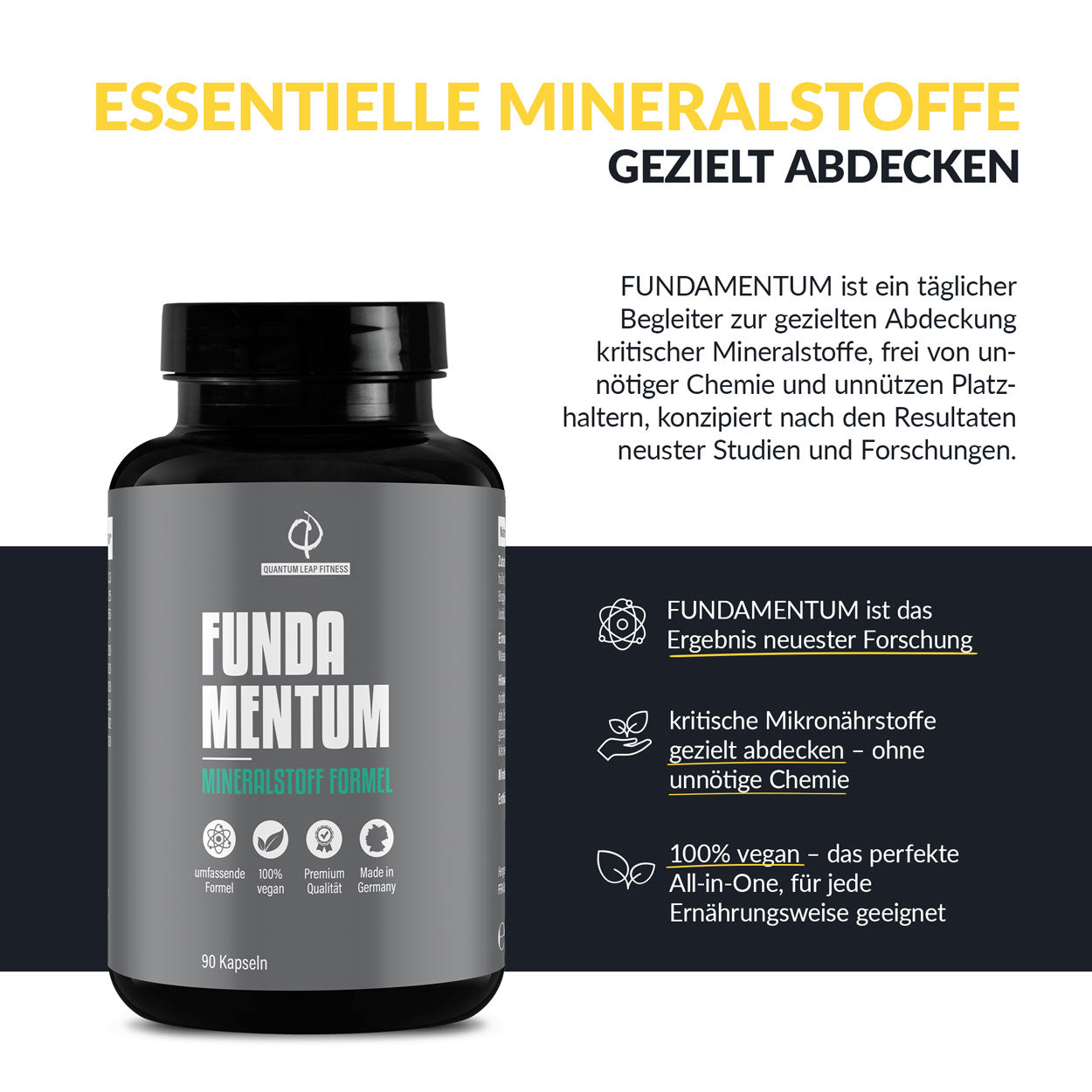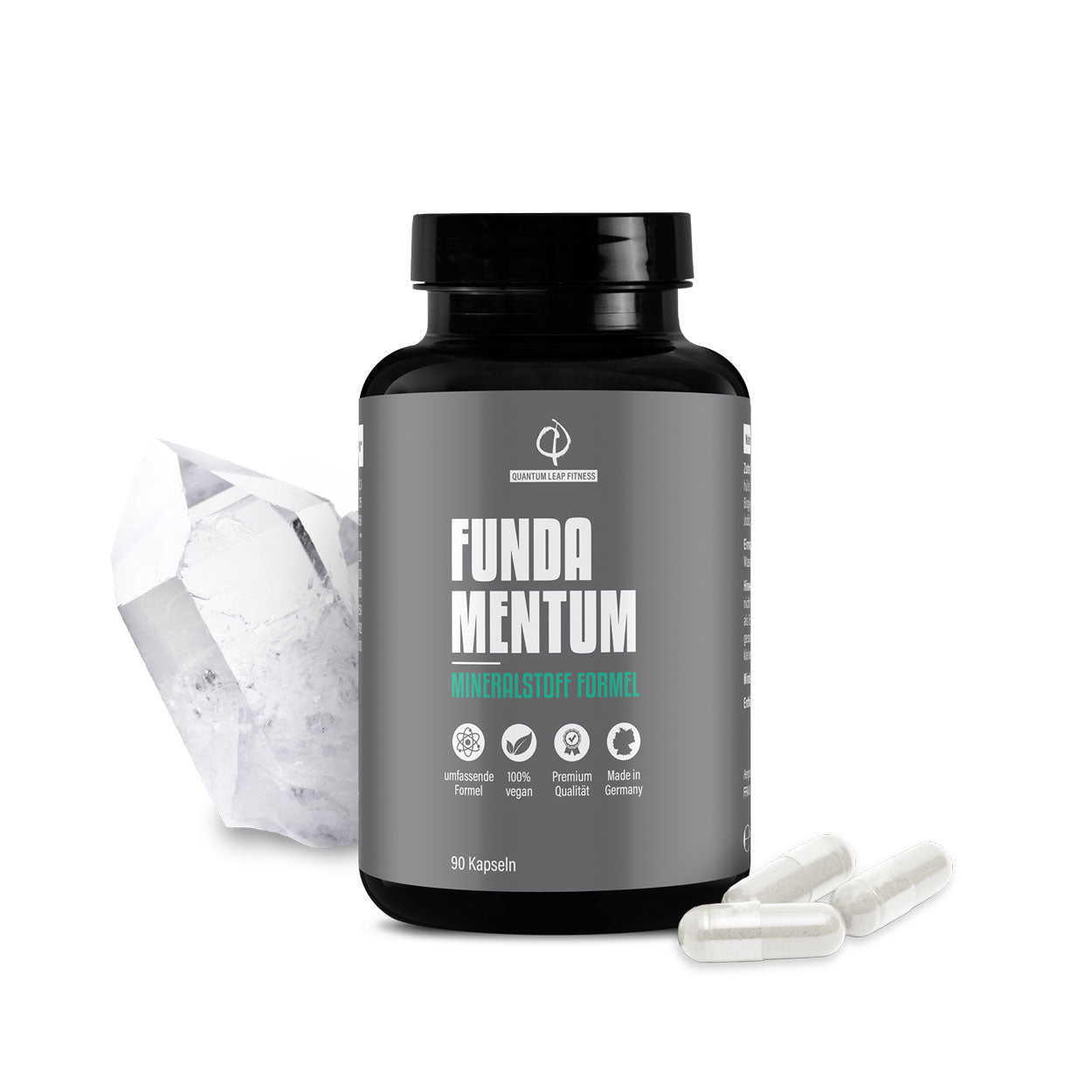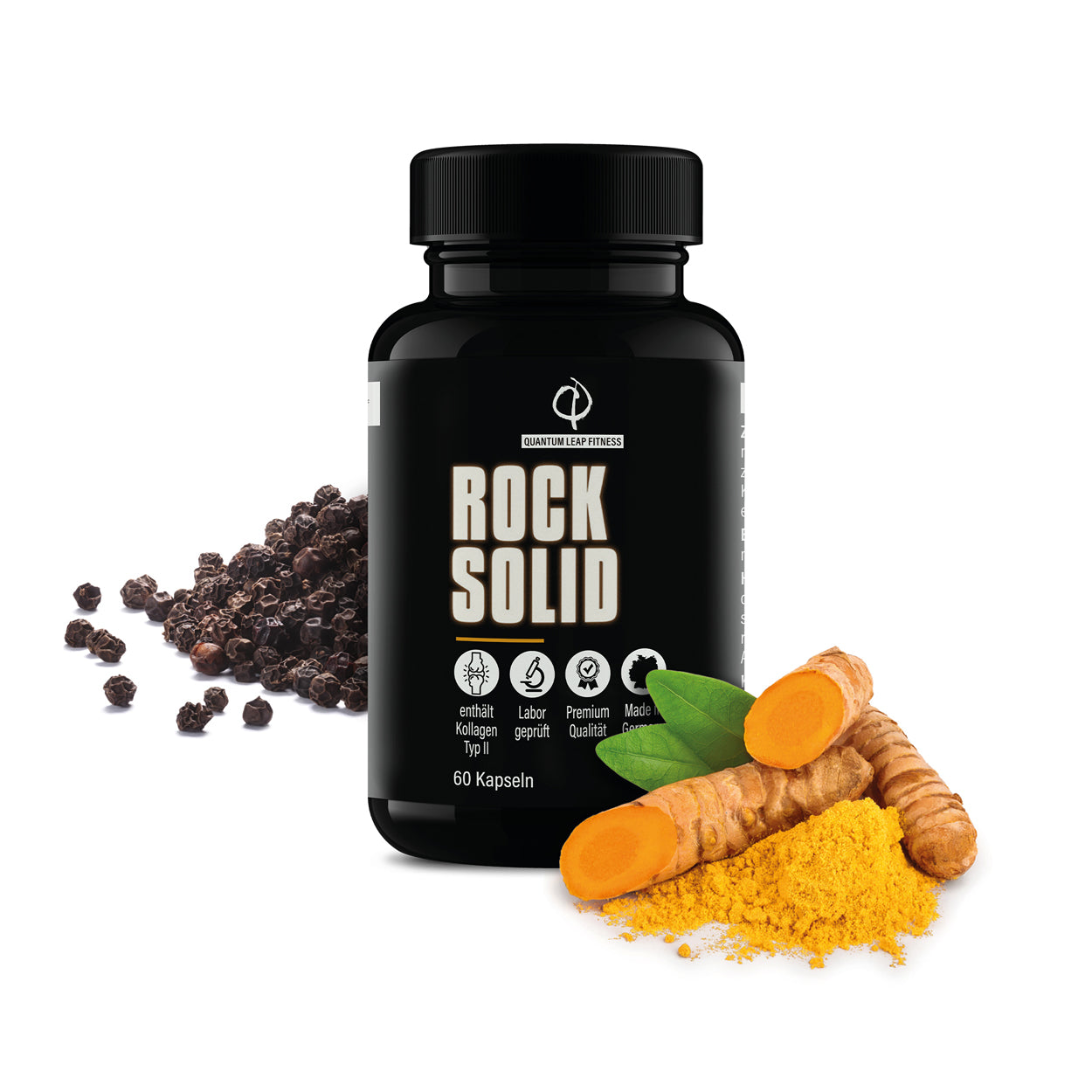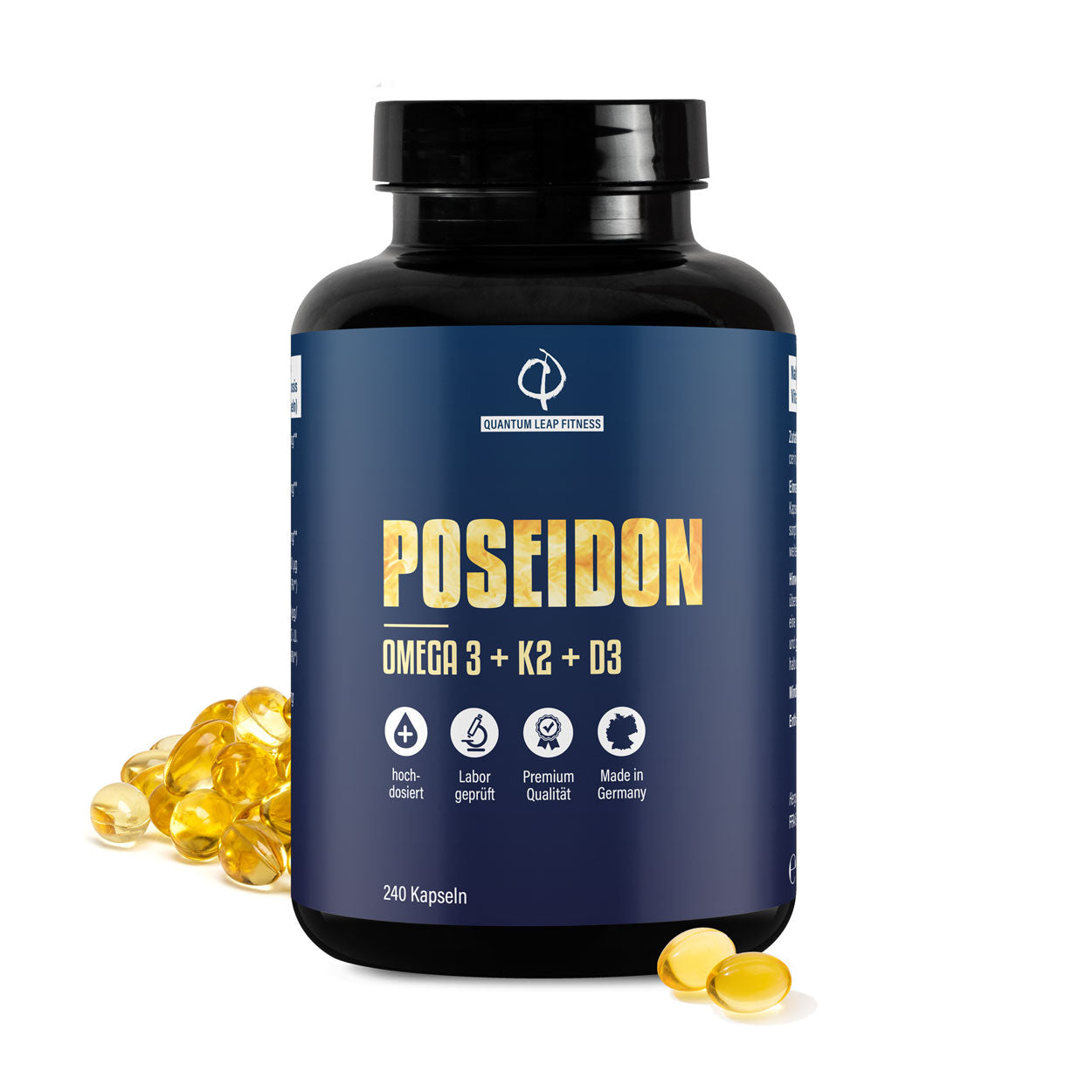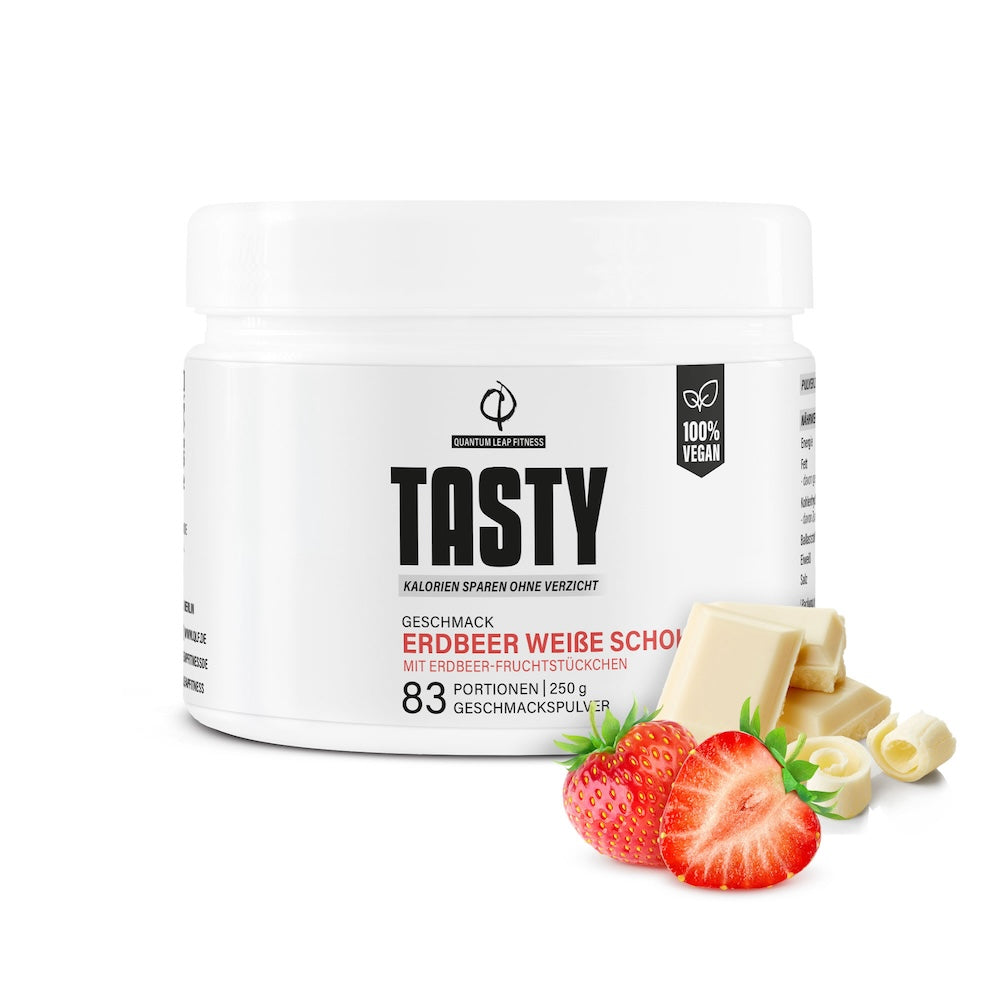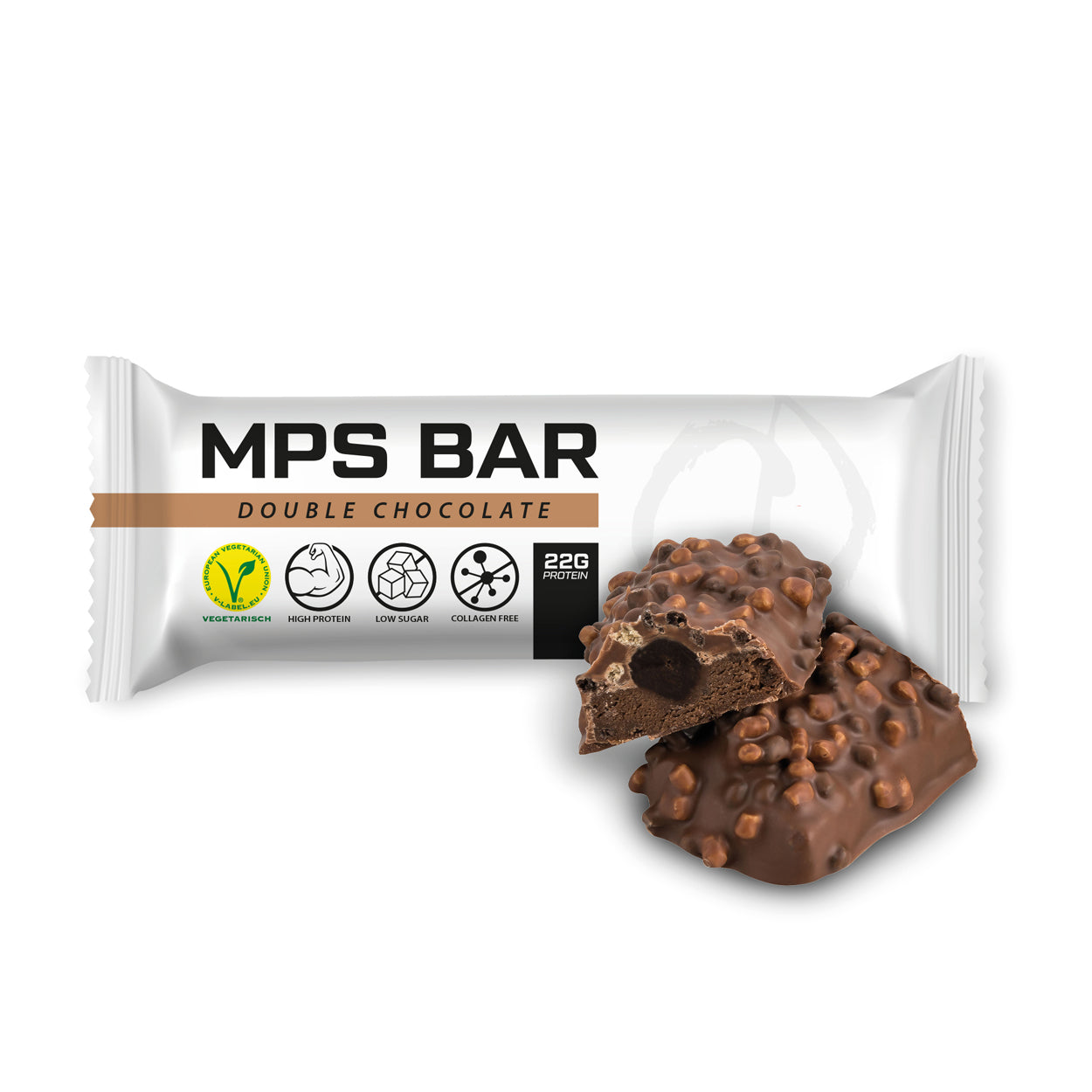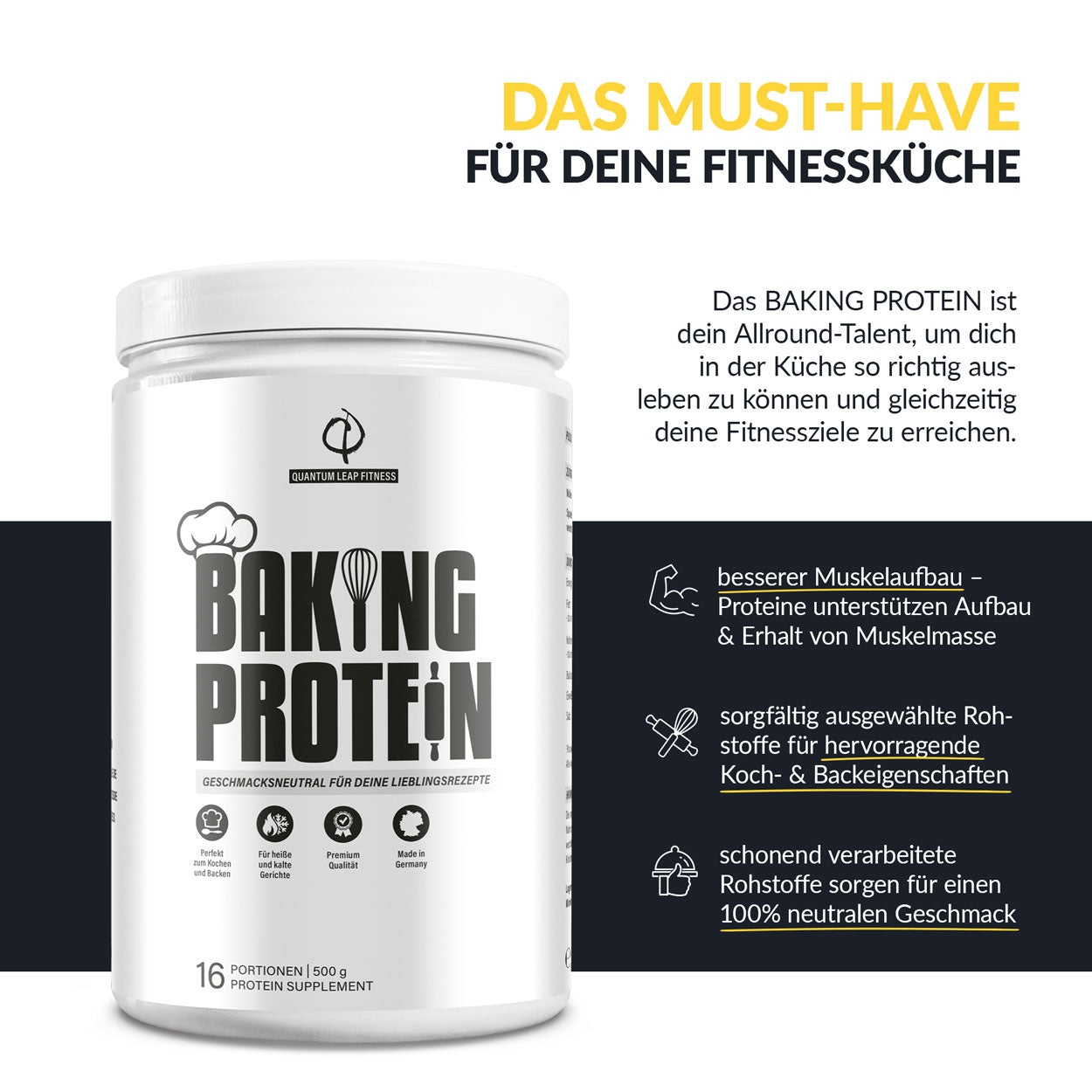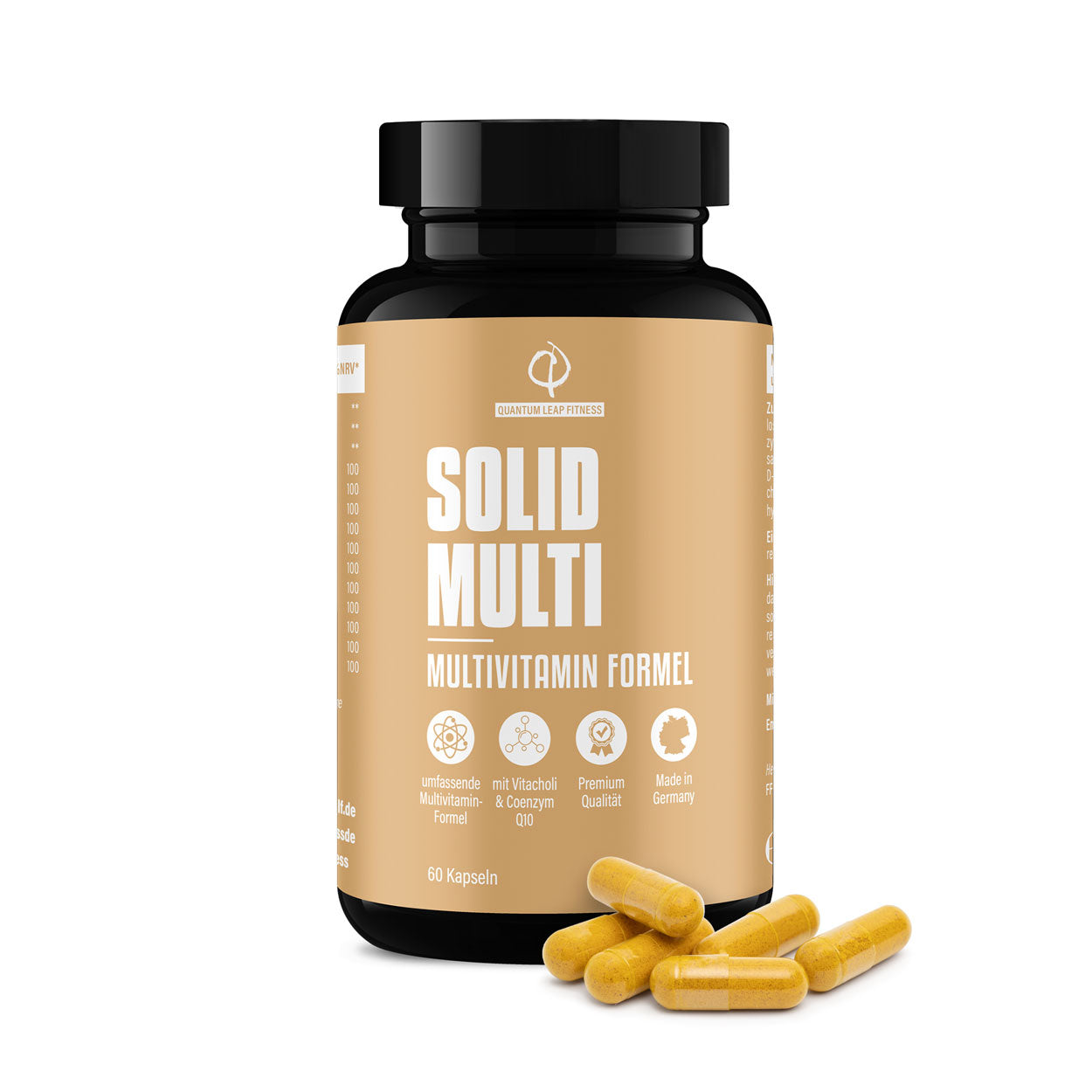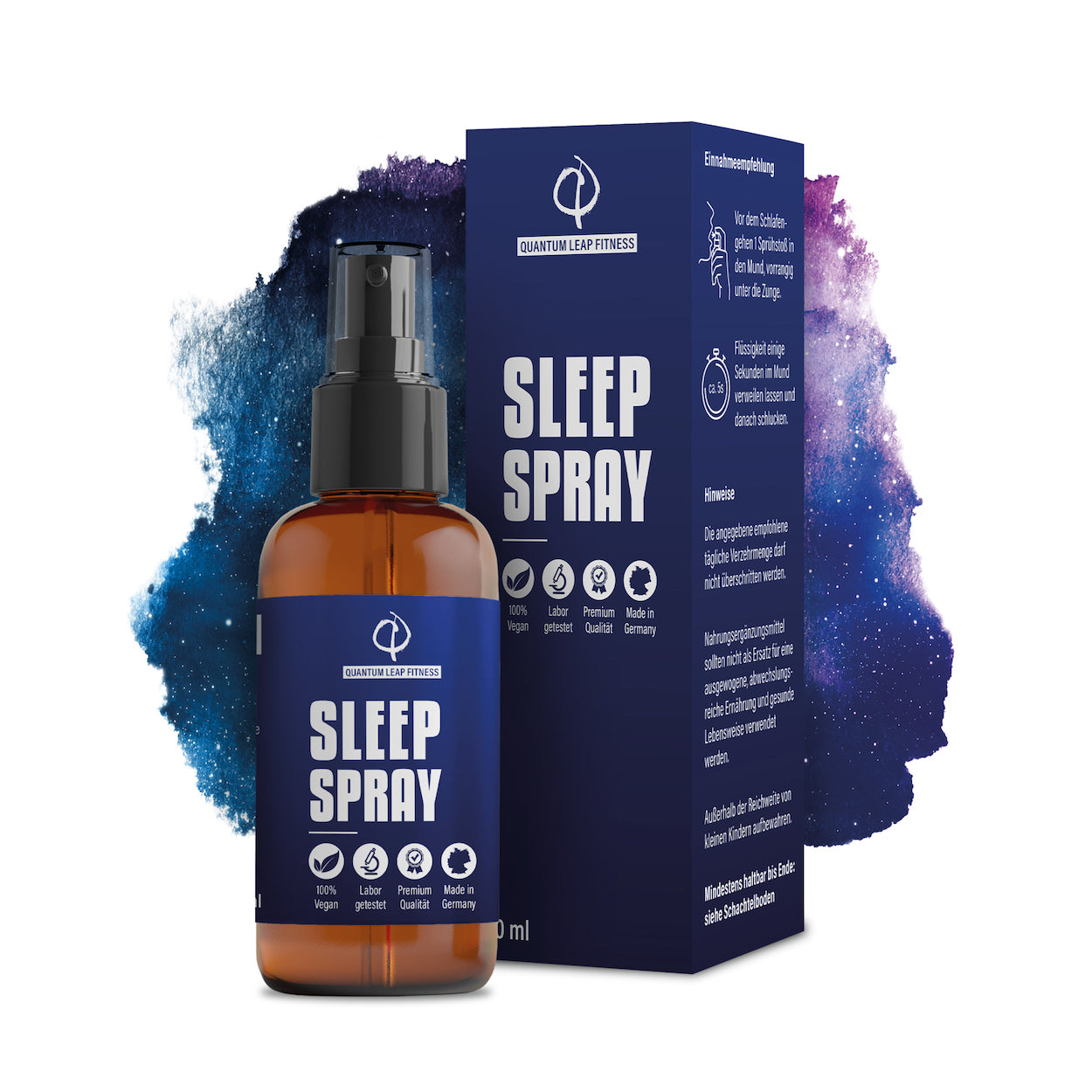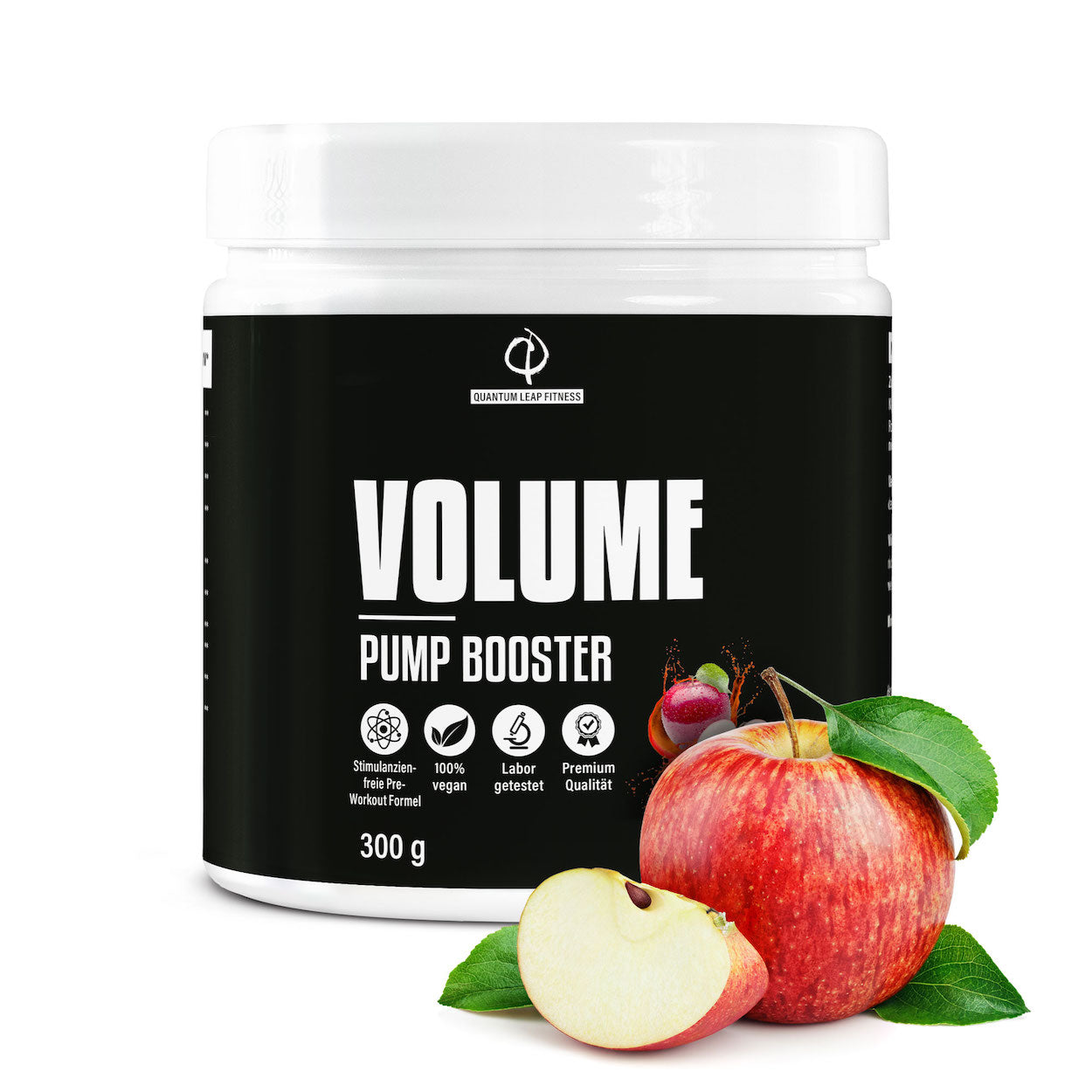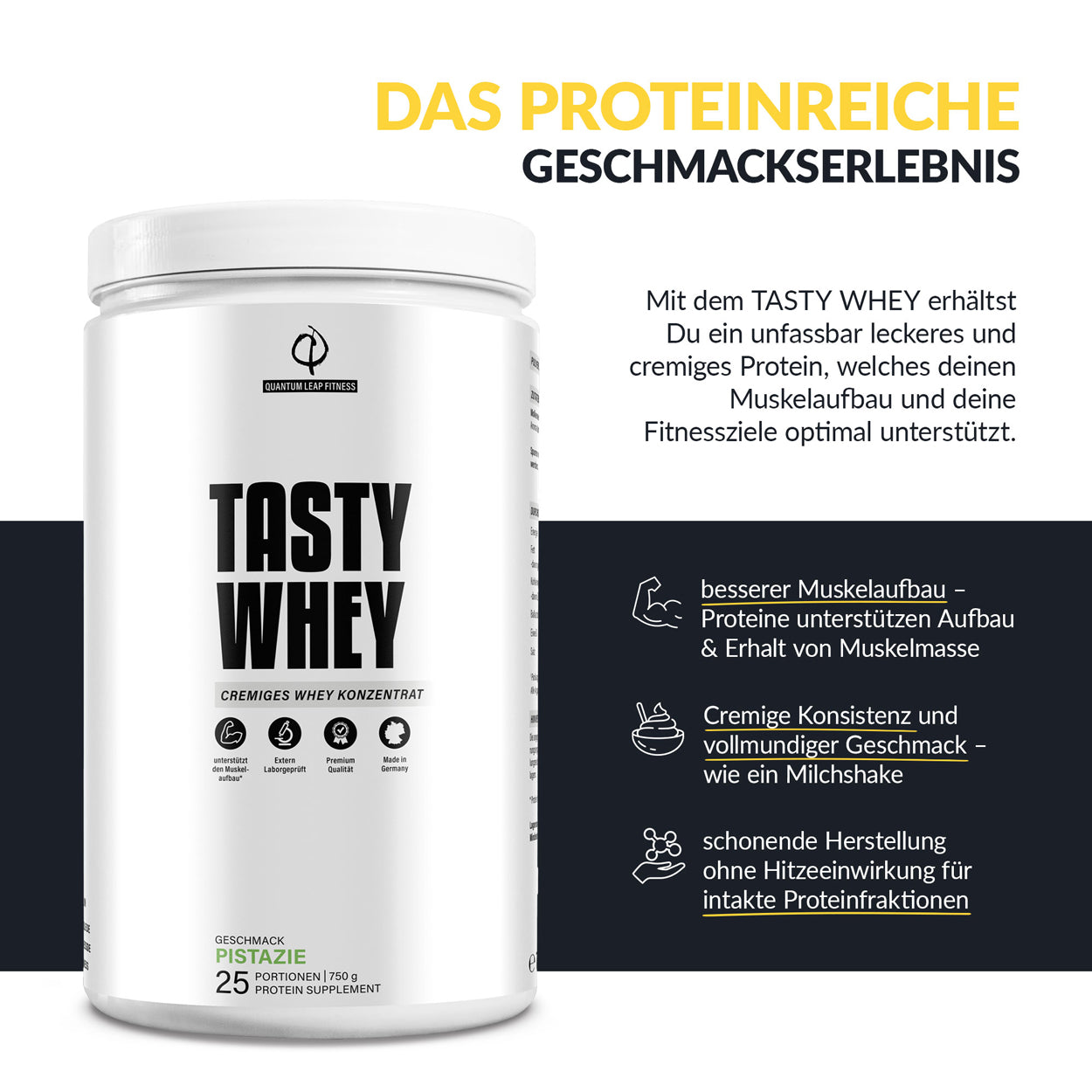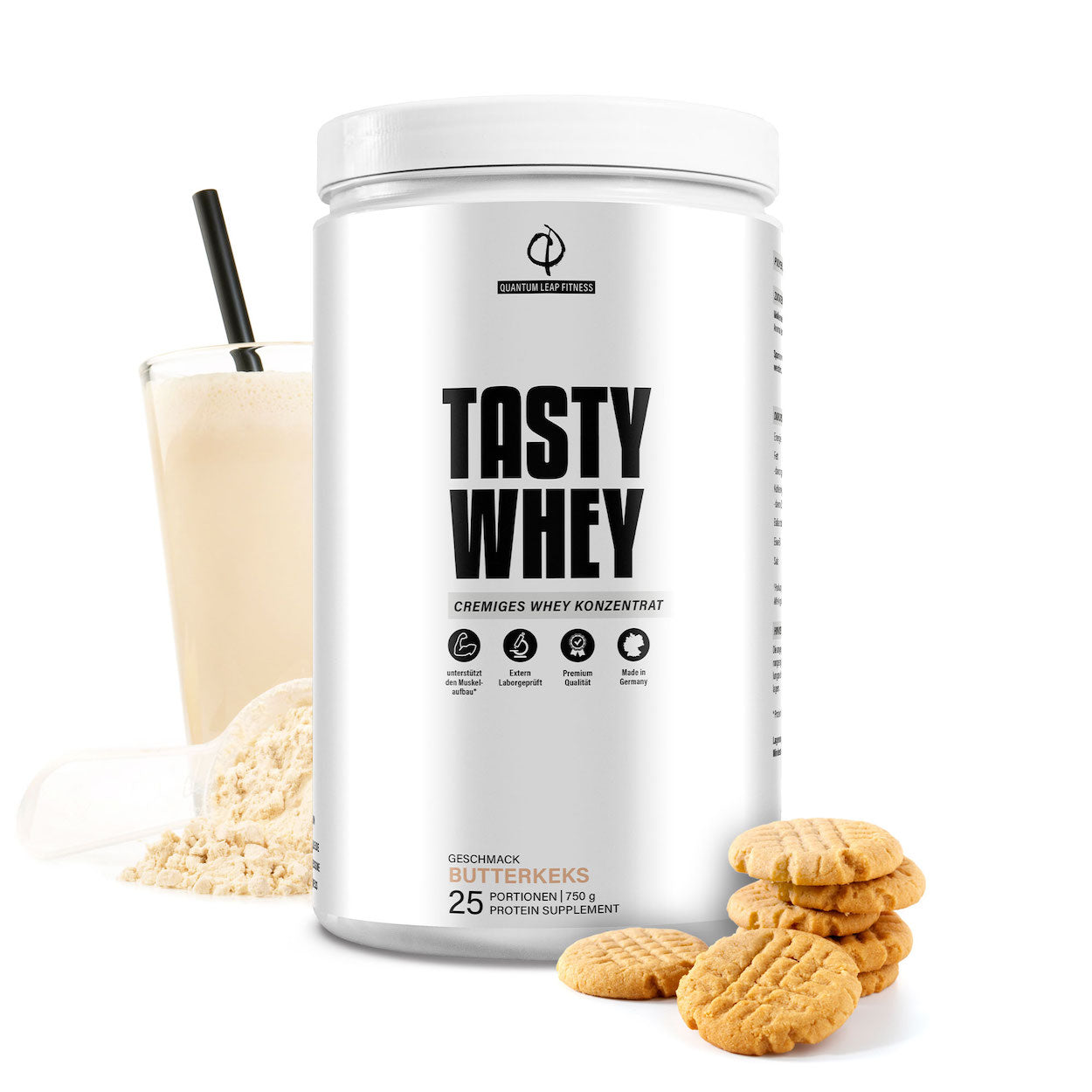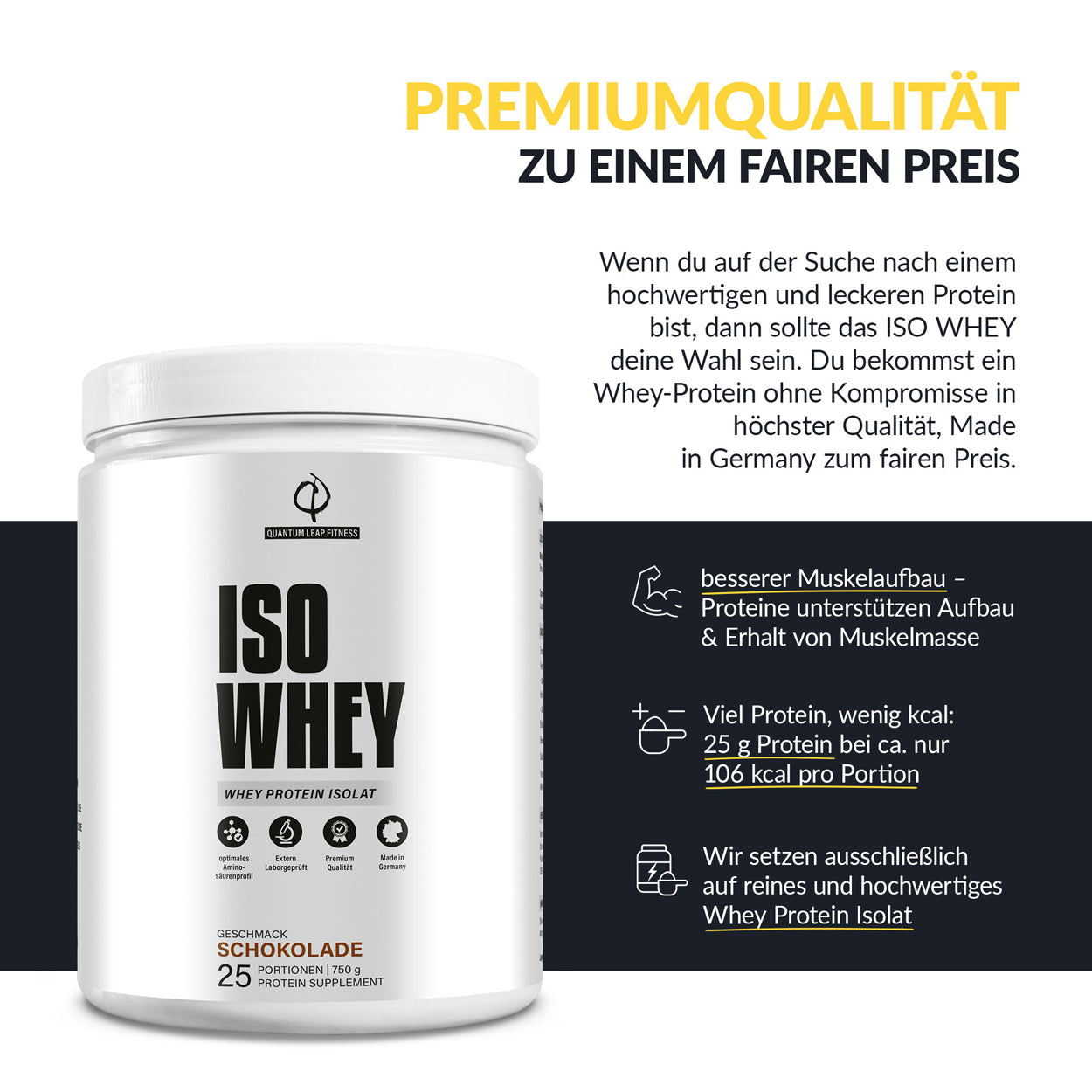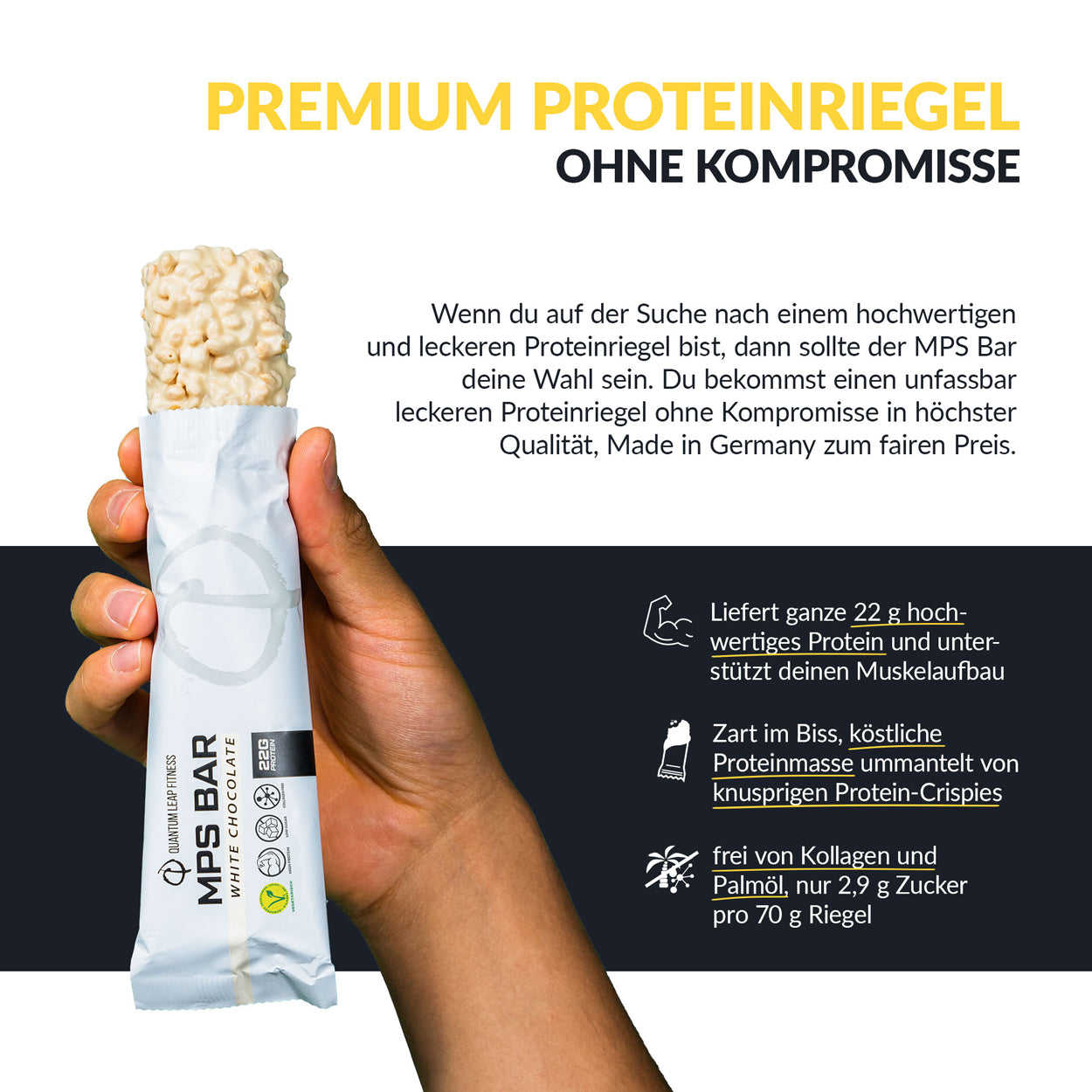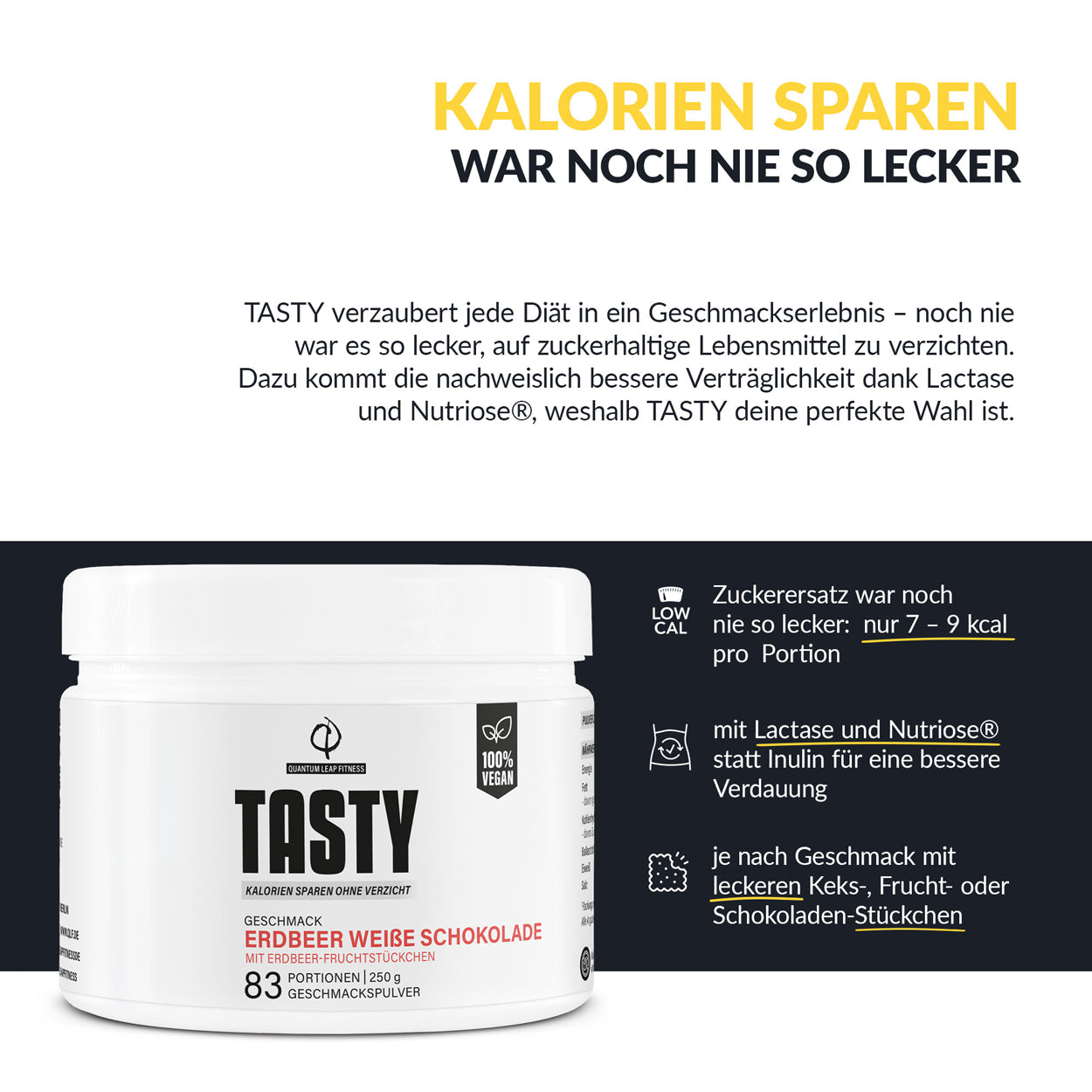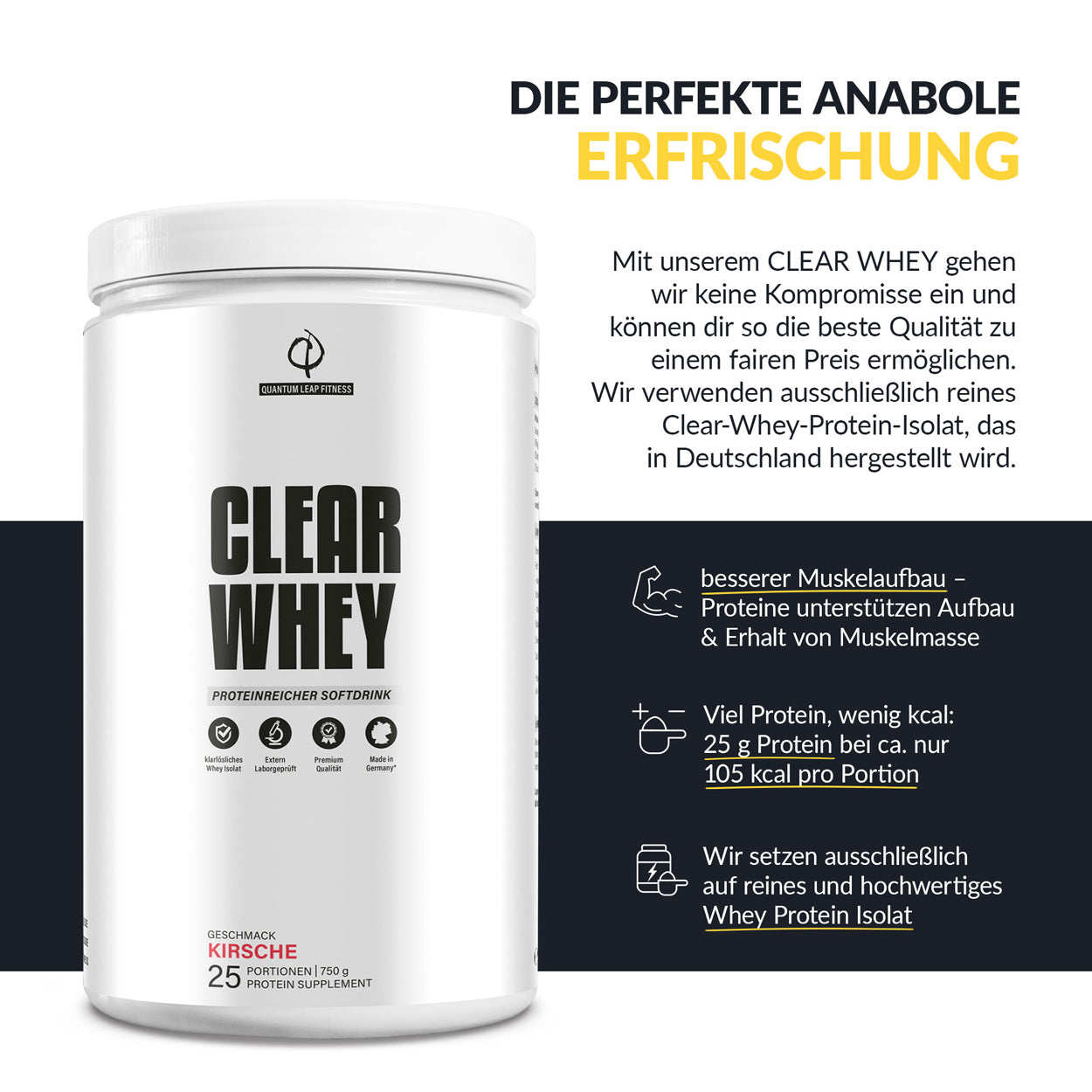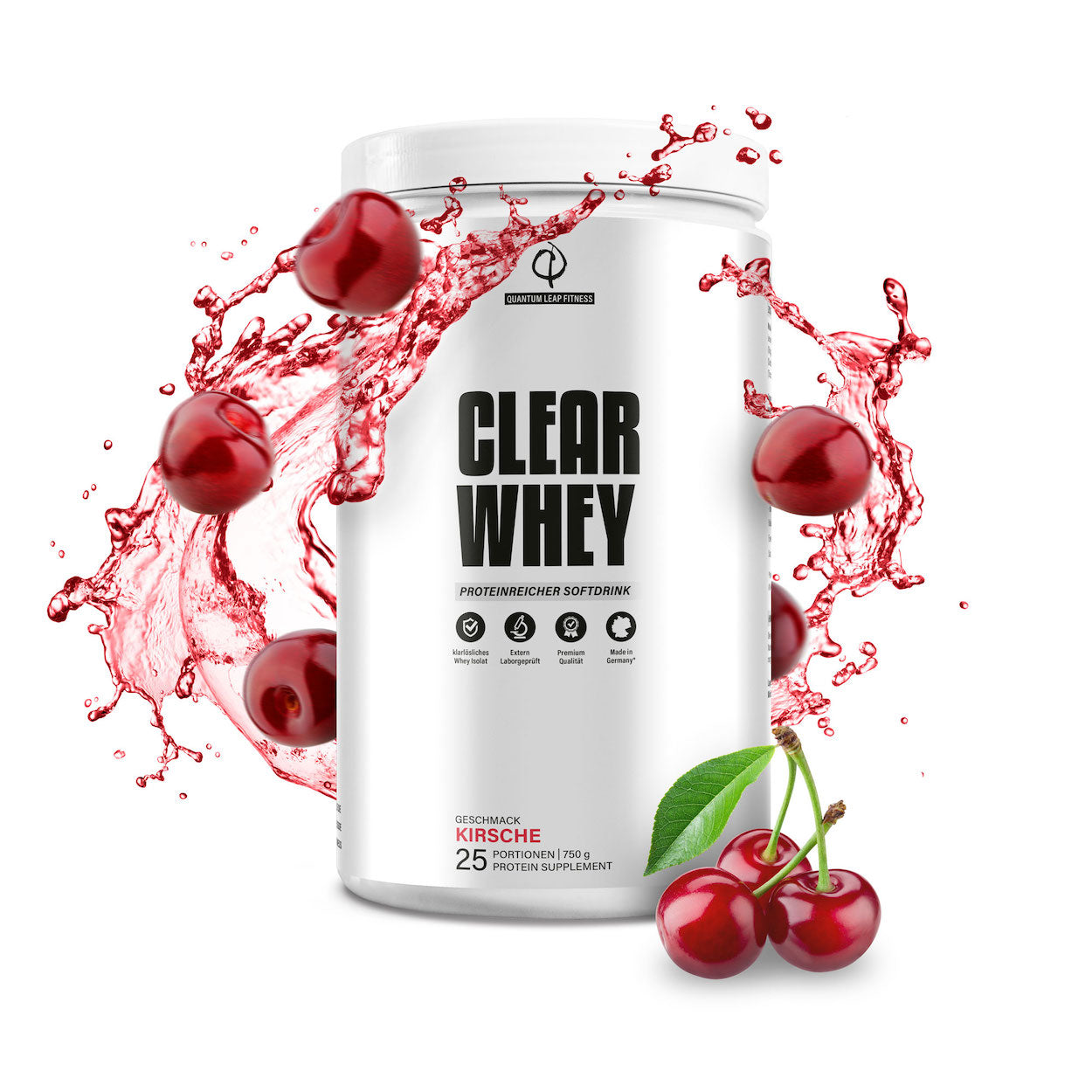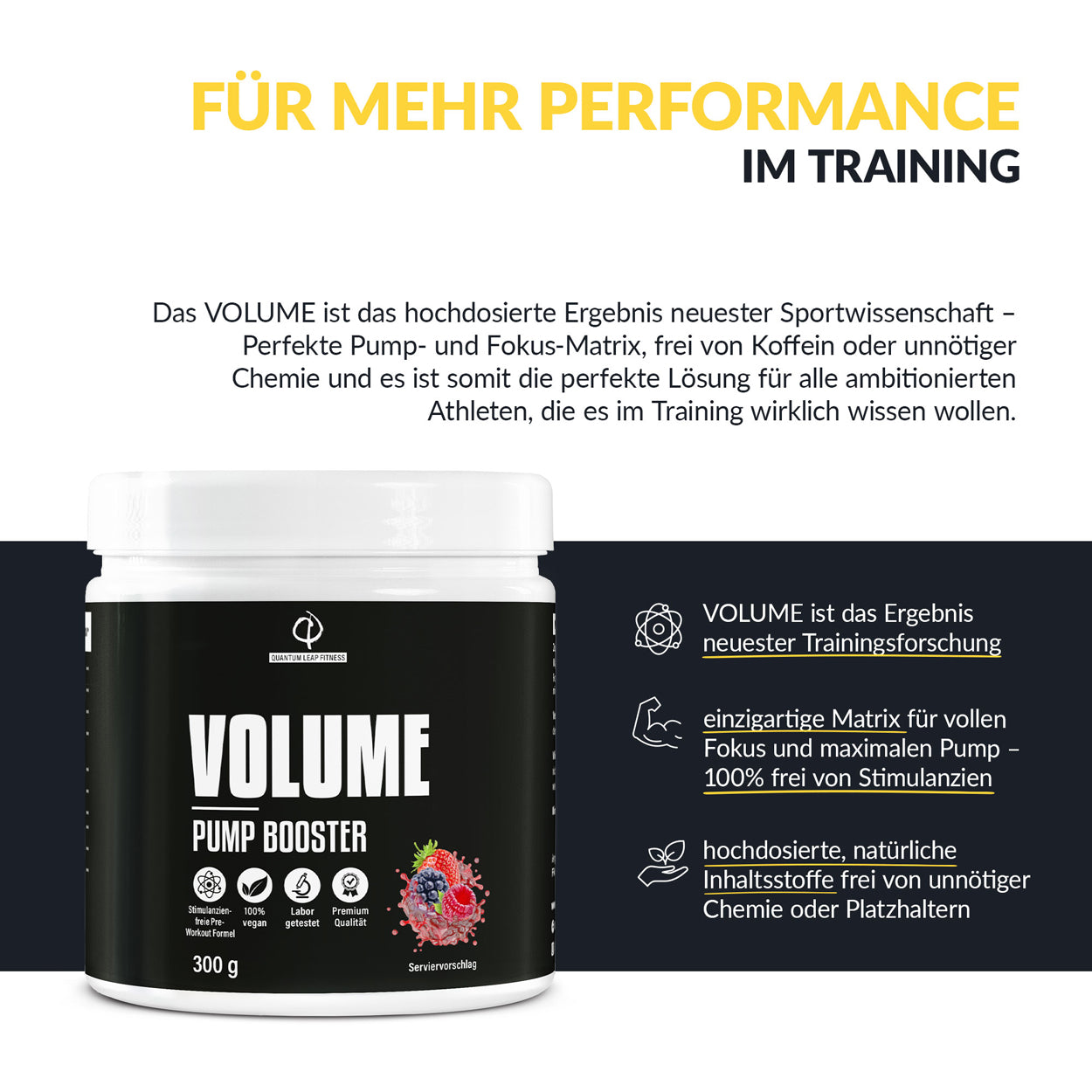





Volume
Stimulanzfreier Pre Workout Booster
Nährwerte & Zutaten
| Nährstoffe und sonstige Stoffe | pro 100 g | pro ½ Portion (7,5 g) | pro Portion (15 g) | % NRV* |
|---|---|---|---|---|
| L-Citrullin-Malat (2:1) | 43,00 g | 3,23 g | 6,45 g | ** |
| L-Arginin Nitrat | 14,00 g | 1,05 g | 2,10 g | ** |
| L-Tyrosin | 14,00 g | 1,05 g | 2,10 g | ** |
| DMAE-Bitartrat (Dimethylaminoethanolamin) | 7,00 g | 525 mg | 1,05 g | ** |
| Amaranthblatt-Extrakt | 7,00 g | 525 mg | 1,05 g | ** |
| L-Norvalin | 2,00 g | 150 mg | 300 mg | ** |
| Pinienrindenextrakt | 1,40 g | 105 mg | 210 mg | ** |
| 1,33 g | 100 mg | 200 mg | ** | |
| Rhodiola Rosea-Extrakt | 1,10 g | 85 mg | 170 mg | ** |
| Bärlappextrakt | 0,14 g | 10 mg | 20 mg | ** |
Eine Packung enthält ca. 20 – 40 Portionen. Alle Angaben unterliegen den bei Naturprodukten üblichen Schwankungen.
*Prozent der empfohlenen täglichen Verzehrmenge laut Verordnung (EU) Nr. 1169/2011
**Keine Nährsto bezugswerte (NRV) vorhanden
L-Citrullin-DL-Malat 2:1, L-Arginin Nitrat, L-Tyrosin, Amaranthblatt-Extrakt, Dimethylethanolamin (DMAE) Bitartrat, Aroma, resistentes Maisdextrin, L-Norvalin, Süßungsmittel (Natriumcyclamat, Sucralose, Acesulfam K), Pinienrindenextrakt (95 % OPC), Rhodiola Rosea, Farbsto Rote Bete Saftpulver, Bärlapp-Extrakt (Lycopodium Serratum).
Spuren von Milch, Ei, Gluten, Soja, Schalen- und Hülsenfrüchten können nicht ausgeschlossen werden.
| Nährstoffe und sonstige Stoffe | pro 100 g | pro ½ Portion (7,5 g) | pro Portion (15 g) | % NRV* |
|---|---|---|---|---|
| L-Citrullin-Malat (2:1) | 43,00 g | 3,23 g | 6,45 g | ** |
| L-Arginin Nitrat | 14,00 g | 1,05 g | 2,10 g | ** |
| L-Tyrosin | 14,00 g | 1,05 g | 2,10 g | ** |
| DMAE-Bitartrat (Dimethylaminoethanolamin) | 7,00 g | 525 mg | 1,05 g | ** |
| Amaranthblatt-Extrakt | 7,00 g | 525 mg | 1,05 g | ** |
| L-Norvalin | 2,00 g | 150 mg | 300 mg | ** |
| Pinienrindenextrakt | 1,40 g | 105 mg | 210 mg | ** |
| 1,33 g | 100 mg | 200 mg | ** | |
| Rhodiola Rosea-Extrakt | 1,10 g | 85 mg | 170 mg | ** |
| Bärlappextrakt | 0,14 g | 10 mg | 20 mg | ** |
Eine Packung enthält ca. 20 – 40 Portionen. Alle Angaben unterliegen den bei Naturprodukten üblichen Schwankungen.
*Prozent der empfohlenen täglichen Verzehrmenge laut Verordnung (EU) Nr. 1169/2011
**Keine Nährsto bezugswerte (NRV) vorhanden
L-Citrullin-DL-Malat 2:1, L-Arginin Nitrat, L-Tyrosin, Amaranthblatt-Extrakt, Dimethylethanolamin (DMAE) Bitartrat, Aroma, resistentes Maisdextrin, L-Norvalin, Süßungsmittel (Natriumcyclamat, Sucralose, Acesulfam K), Pinienrindenextrakt (95 % OPC), Rhodiola Rosea, Farbsto Rote Bete Saftpulver, Bärlapp-Extrakt (Lycopodium Serratum).
Spuren von Milch, Ei, Gluten, Soja, Schalen- und Hülsenfrüchten können nicht ausgeschlossen werden.
Verzehrempfehlung
Je nach gewünschter Intensität 7,5 g – 15 g Pulver (1⁄2 – 1 gehäufter Messlöffel) zu sich nehmen.
Die gewählte Dosis in etwa 200 ml bis 400 ml Wasser einrühren und 20 bis 30 Minuten vor dem Training trinken.
Achte darüber hinaus auf eine ausreichende Flüssigkeitszufuhr während des Trainings.
Studien & Referenzen
- Goldstein, Erica R., et al. "International society of sports nutrition position stand: caffeine and performance." Journal of the International Society of Sports Nutrition 7.1 (2010): 1-15.
- EFSA Panel on Dietetic Products, Nutrition and Allergies (NDA). "Scientific Opinion on the substantiation of health claims related to caffeine and increased fat oxidation leading to a reduction in body fat mass" EFSA Journal 9.4 (2011): 2054
- Nedeltcheva, Arlet V., et al. "Insufficient sleep undermines dietary efforts to reduce adiposity." Annals of internal medicine 153.7 (2010): 435-441.
- Dattilo, Murilo, et al. "Paradoxical sleep deprivation induces muscle atrophy." Muscle & nerve 45.3 (2012): 431-433.
- Jåbekk, Pål, et al. "A randomized controlled pilot trial of sleep health education on body composition changes following 10 weeks resistance exercise." The Journal of Sports Medicine and Physical Fitness (2020).
- Wang, Xuewen, et al. "Influence of sleep restriction on weight loss outcomes associated with caloric restriction." Sleep 41.5 (2018): zsy027.
- Saner, Nicholas J., et al. "The effect of sleep restriction, with or without high‐intensity interval exercise, on myofibrillar protein synthesis in healthy young men." The Journal of physiology 598.8 (2020): 1523-1536.
- Kline, Christopher E., et al. "The association between sleep health and weight change during a 12-month behavioral weight loss intervention." International Journal of Obesity 45.3 (2021): 639-649.
- Hawkins, Marquis S., et al. "Sleep Health Characteristics among Adults Who Attempted Weight Loss in the Past Year: NHANES 2017–2018." International Journal of Environmental Research and Public Health 18.19 (2021): 10170.Dawson, Drew, and Kathryn Reid. "Fatigue, alcohol and performance impairment." Nature 388.6639 (1997): 235-235.
- Alhola, Paula, and Päivi Polo-Kantola. Nature 388.6639 (1997): 235-235. Alhola, Paula, and Päivi Polo-Kantola. "Sleep deprivation: Impact on cognitive performance." Neuropsychiatric disease and treatment (2007).
- Tucker, Adrienne M., et al. "Effects of sleep deprivation on dissociated components of executive functioning." Sleep 33.1 (2010): 47-57.
- Maquet, Pierre, et al. "Experience-dependent changes in cerebral activation during human REM sleep." Nature neuroscience 3.8 (2000): 831-836.
- Lo, June C., et al. "Sleep deprivation increases formation of false memory." Journal of sleep research 25.6 (2016): 673-682.
- Rolls, Asya, et al. "Optogenetic disruption of sleep continuity impairs memory consolidation." Proceedings of the National Academy of Sciences 108.32 (2011): 13305-13310
- Stepan, Michelle E., Erik M. Altmann, and Kimberly M. Fenn. "Effects of total sleep deprivation on procedural placekeeping: More than just lapses of attention." Journal of Experimental Psychology: General 149.4 (2020): 800.
- Bubu, Omonigho M., et al. "Sleep, cognitive impairment, and Alzheimer’s disease: a systematic review and meta-analysis." Sleep 40.1 (2017): zsw032.
- Wennberg, Alexandra MV, et al. "Sleep disturbance, cognitive decline, and dementia: a review." Seminars in neurology. Vol. 37. No. 4. NIH Public Access, 2017.
- Hua, Jianian, et al. "Sleep Duration and the Risk of Metabolic Syndrome in Adults: A Systematic Review and Meta-Analysis." Frontiers in neurology 12 (2021): 127..
- Blanchard, James, and S. J. A. Sawers. "The absolute bioavailability of caffeine in man." European journal of clinical pharmacology 24.1 (1983): 93-98.
- Nehlig, Astrid. "Interindividual differences in caffeine metabolism and factors driving caffeine consumption." Pharmacological reviews 70.2 (2018): 384-411.
- Djordjevic, Natasa, et al. "Induction of CYP1A2 by heavy coffee consumption is associated with the CYP1A2− 163C> A polymorphism." European journal of clinical pharmacology 66.7 (2010): 697-703.
- Rasmussen, Birgitte B., et al. "The interindividual differences in the 3-demthylation of caffeine alias CYP1A2 is determined by both genetic and environmental factors." Pharmacogenetics and Genomics 12.6 (2002): 473-478.
- Ghotbi, Roza, et al. "Comparisons of CYP1A2 genetic polymorphisms, enzyme activity and the genotype-phenotype relationship in Swedes and Koreans." European journal of clinical pharmacology 63.6 (2007): 537-546.
- Perera, V., A. S. Gross, and A. J. McLachlan. "Influence of environmental and genetic factors on CYP1A2 activity in individuals of South Asian and European ancestry." CliniCal pharmaCology & TherapeuTiCs 92.4 (2012): 511-519.
- Drake, Christopher, et al. "Caffeine effects on sleep taken 0, 3, or 6 hours before going to bed." Journal of Clinical Sleep Medicine 9.11 (2013): 1195-1200.
- Schoenfeld, Brad J., and Bret Contreras. "The muscle pump: potential mechanisms and applications for enhancing hypertrophic adaptations." Strength & Conditioning Journal 36.3 (2014): 21-25.
- Wackerhage, Henning, et al. "Stimuli and sensors that initiate skeletal muscle hypertrophy following resistance exercise." Journal of applied physiology 126.1 (2019): 30-43.
- Assefa, Awraris Derbie, et al "Fruit morphology, citrulline, and arginine levels in diverse watermelon (Citrullus lanatus) germplasm collections." Plants 9.9 (2020): 1054.
- Barmore, Walker, and William L. Stone. "Physiology, urea cycle." (2018).
- Barkhidarian, Bahareh, et al. "Effects of L-citrulline supplementation on blood pressure: A systematic review and meta-analysis." Avicenna journal of phytomedicine 9.1 (2019): 10.
- Curis, Emmanuel, et al. "Almost all about citrulline in mammals." Amino acids 29.3 (2005): 177.
- Schwedhelm, Edzard, et al. "Pharmacokinetic and pharmacodynamic properties of oral L‐citrulline and L‐arginine: impact on nitric oxide metabolism." British journal of clinical pharmacology 65.1 (2008): 51-59.
- Wijnands, Karolina AP, et al. "Citrulline a more suitable substrate than arginine to restore NO production and the microcirculation during endotoxemia." PloS one 7.5 (2012): e37439.
- McKinley-Barnard, Sarah, et al. "Combined L-citrulline and glutathione supplementation increases the concentration of markers indicative of nitric oxide synthesis." Journal of the International Society of Sports Nutrition 12.1 (2015): 1-8.
- Wu, Guoyao. "Urea synthesis in enterocytes of developing pigs." Biochemical Journal 312.3 (1995): 717-723.
- van de Poll, Marcel CG, et al. "Interorgan amino acid exchange in humans: consequences for arginine and citrulline metabolism." The American journal of clinical nutrition 85.1 (2007): 167-172.
- Moinard, C., et al. "Dose-ranging effects of citrulline administration on plasma amino acids and hormonal patterns in healthy subjects: the Citrudose pharmacokinetic study." British journal of nutrition 99.4 (2008): 855-862.
- Suzuki, Takashi, et al. "The effects on plasma L-arginine levels of combined oral L-citrulline and L-arginine supplementation in healthy males." Bioscience, biotechnology, and biochemistry 81.2 (2017): 372-375.
- Metoki, K., and F. A. Hommes. "A possible rate limiting factor in urea synthesis by isolated hepatocytes: the transport of ornithine into hepatocytes and mitochondria." The International journal of biochemistry 16.11 (1984): 1155-1157.
- Sugino, Tomohiro, et al. "L-ornithine supplementation attenuates physical fatigue in healthy volunteers by modulating lipid and amino acid metabolism." Nutrition research 28.11 (2008): 738-743.
- Saavedra-Molina, A., and E. Pina. "Ornithine uptake by rat liver mitochondria: effect of calcium and arginine." Biochemistry international 15.1 (1987): 81-86.
- Nakashima, A., et al. "Role of N-terminus of tyrosine hydroxylase in the biosynthesis of catecholamines." Journal of neural transmission 116.11 (2009): 1355-1362.
- Hase, Adrian, Sophie E. Jung, and Marije aan het Rot. "Behavioral and cognitive effects of tyrosine intake in healthy human adults." Pharmacology Biochemistry and Behavior 133 (2015): 1-6.
- Kerksick, Chad M., et al. "ISSN exercise & sports nutrition review update: research & recommendations." Journal of the International Society of Sports Nutrition 15.1 (2018): 38.
- Subramanian, Deepa, and Swati Gupta. "Pharmacokinetic study of amaranth extract in healthy humans: A randomized trial." Nutrition 32.7-8 (2016): 748-753.
- Salve, Jaysing, et al. "Adaptogenic and anxiolytic effects of ashwagandha root extract in healthy adults: a double-blind, randomized, placebo-controlled clinical study." Cureus 11.12 (2019).
- Bonilla, Diego A., et al. "Effects of Ashwagandha (Withania somnifera) on Physical Performance: Systematic Review and Bayesian Meta-Analysis." Journal of Functional Morphology and Kinesiology 6.1 (2021): 20.
- Kaur, Parvinder, et al. "A biologically active constituent of withania somnifera (ashwagandha) with antistress activity." Indian Journal of Clinical Biochemistry 16.2 (2001): 195-198.
Garantie
Spüre den Unterschied ohne Risiko.
30 Tage Geld-zurück-Garantie.
Wir sind bis zur letzten Muskelfaser von der Wissenschaft und der Qualität unserer Produkte überzeugt – und darum erhältst Du bei uns eine risikofreie 30 Tage Geld-zurück-Garantie.
Überzeuge Dich somit selbst von der Qualität unserer Produkte.




